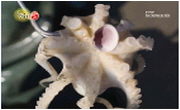크리스티앙 볼탕스키(Christian Boltanski)는 2010년 프랑스 파리 그랑 팔레(Grand Pala is)에서 《모뉘망따2010-빽손 Monumenta2010-Personnes 》을 통하여 ‘작품 안에 있는 관객’을 강조하였다. 관객이 작품...
http://chineseinput.net/에서 pinyin(병음)방식으로 중국어를 변환할 수 있습니다.
변환된 중국어를 복사하여 사용하시면 됩니다.
- 中文 을 입력하시려면 zhongwen을 입력하시고 space를누르시면됩니다.
- 北京 을 입력하시려면 beijing을 입력하시고 space를 누르시면 됩니다.

‘작품 안에 있는 관객’에 대한 철학적 사유 - Christian Boltanski의 《Personnes》을 중심으로 - = The Philosophical thinking about ‘the spectator in the works of art’ - around《Personnes》of Christian Boltanski -
한글로보기https://www.riss.kr/link?id=A105433200
- 저자
- 발행기관
- 학술지명
- 권호사항
-
발행연도
2018
-
작성언어
Korean
- 주제어
-
등재정보
KCI등재
-
자료형태
학술저널
-
수록면
59-74(16쪽)
- DOI식별코드
- 제공처
- 소장기관
-
0
상세조회 -
0
다운로드
부가정보
국문 초록 (Abstract)
크리스티앙 볼탕스키(Christian Boltanski)는 2010년 프랑스 파리 그랑 팔레(Grand Pala is)에서 《모뉘망따2010-빽손 Monumenta2010-Personnes 》을 통하여 ‘작품 안에 있는 관객’을 강조하였다. 관객이 작품 앞에 일정한 거리를 두고 작품의 의미를 파악하는 것이 아니라 작품 안으로 들어가도록 유도하였다. 볼탕스키는 《빽손 Personnes 》을 찾아온 사람들이 작품과 일정한 거리를 두지 못하도록 누군가 입었던 수많은 옷, 누군지 알 수 없는 수십 명의 심장박동 소리, 추위, 거중기의 거대한 기계소음이라는 조형적 장치를 설치하였다.
볼탕스키는 이러한 조형적 장치를 통하여 관객이 작품 앞이 아닌 작품 안에 있도록 유도하고 있는 것이다. 여기서 관객이 작품 앞에 있다는 것은 보는 주체로서 관객과 보여 지는 대상으로서 작품의 관계를 의미한다. 이런 관계에서 ‘본다’라는 것은 관객이 작품의 의미를 파악하고 내면화하는 지성적 행위를 의미하며, 이러한 ‘봄’을 메를로-퐁티는 정신 작용으로서 봄이라고 말한다.
반면 작품 안에 있는 관객은 작품을 정신작용이 아닌 지각을 통하여 보는데, 이러한 지각을 통한 봄을 메를로-퐁티는 의식의 내면화가 아닌 사물과의 접촉이라고 말한다. 따라서 볼탕스키의 ‘작품 안에 있는 관객’은 우선 주체-대상의 관계가 와해된다는 측면에서 주체의 부재를 의미하며, 또한 작품의 의미를 파악하고 내면화 하는 것이 아니라 사물로서 작품과 접촉을 통한 만남의 경험을 의미하는 무-의미를 가리킨다. 여기서 무-의미는 의미가 없다는 것이 아니라 작품과 관객이 주체-대상의 관계를 벗어나 무한한 만남의 관계로 들어감을 뜻한다.
다국어 초록 (Multilingual Abstract)
In 2010, Christian Boltanski exhibited 《Monumenta 2010-Personnes》in the Grand Palais Paris, France. He emphasized “the spectator in the works of art”, not “the spectator in front of the works of art.” It means that Boltanski didn’t want ...
In 2010, Christian Boltanski exhibited 《Monumenta 2010-Personnes》in the Grand Palais Paris, France. He emphasized “the spectator in the works of art”, not “the spectator in front of the works of art.” It means that Boltanski didn’t want to make a place for the spectator. Because the spectator in front of the works of art have to be in his proper place in front of the painting, the sculpture, the photography, etc. in the gallery, in order to catch the meaning that the works of art imply. But the spectator in the works of art does not need to be in position in front of the painting or the sculpture. Because there is not any distance between the spectator and the works of art.
To eliminate the distance between the spectator and the works, Boltanski installed the used clothes, the heartbeat, the cold, the noise in the 《Personnes》.This elimination would bring the spectator into the experience with the things as the works of art, like the clothes, the heartbeat, the noise, etc. in 《Personnes》. In this experience, the vision of the spectator would be regarded as a kind of the contact between the spectator and the things.
This experience or this contact would make the spectator as a subject disappear. In other words, it means the absence of the subject. And also, the “non-sens.” The non-sens does not say that it does not have any meaning. The non-sens is the experience and the contact between the spectator and the things.
동일학술지(권/호) 다른 논문
-
미술관 회의론을 극복하기 위한 단초로서의 존 듀이의 ‘경험으로서의 예술’
- 한국영상미디어협회
- 최정은 ( Choi Jeongeun )
- 2018
- KCI등재
-
1990년대 초 중국 아트 빌리지 형성에 관한 연구 - 원명원(圓明園) 아트 빌리지와 동촌(東村)을 중심으로 -
- 한국영상미디어협회
- 정진링 ( Zheng Jinling )
- 2018
- KCI등재
-
3차원 가상공간의 스튜디오를 활용한 스마트프린트 - VR360을 활용한 판화예술공방의 혼합현실 창작 모듈 구성 -
- 한국영상미디어협회
- 임장훈 ( Lim Janghoon )
- 2018
- KCI등재
-
그 시간의 기억 속으로 -<일본 아니메 무엇이 대단한가>를 읽으며
- 한국영상미디어협회
- 조관용
- 2018
- KCI등재





 KCI
KCI KISS
KISS







